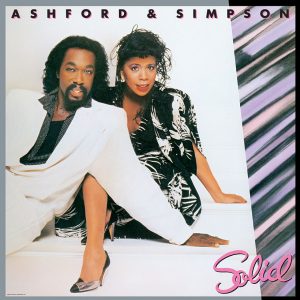If backing singers are 20 feet from stardom, the best sidemen in rock are rubbing elbows with it. A charismatic singer and flashy lead guitarist may be crucial to shaping the image and sound of a band, but the best sidemen (or sidewomen) form its foundation. These unsung musicians are much more than guns for hire. They are a band’s North Star, keeping the whole operation afloat while allowing the frontman to shine.
While they don’t always receive the fanfare they deserve, here are some of the best sidemen in rock.
Sid Vicious
Often overshadowed by tragic events surrounding his death, it’s easy to forget how vital Sid Vicious was to Sex Pistols. While some of his bandmates would debate how important he was sonically, stylistically, Sid Vicious embodied the rebellious spirit of the band just as much as co-conspirator Johnny Rotten. When compared to Rotten and lead guitarist Steve Jones, bassist Vicious took a backseat, even if he worked hard at his craft. Stealing the spotlight from his more lauded bandmates, by definition, makes Vicious one of the best sidemen in rock.
James Burton
Having been playing since the 50s, James Burton boasts an impressive résumé including the likes of Elvis Presley, Ricky Nelson, Emmylou Harris, John Denver, Johnny Cash, Merle Haggard, and Elvis Costello, among countless others. For his accomplishments (and his incredible ability to fit in seamlessly with so many huge names), Burton was inducted by Keith Richards into the Rock And Roll Hall Of Fame, in 2001. What made him so attractive? Perhaps one of the finest guitar pickers in history, Burton’s trademark licks appeared effortless when they were quite the opposite. There have been more famous guitarists in country, rock, and blues, but none could ever master the craft as easily as Burton.
James Jamerson
This sideman and legendary session musician operated slightly outside of the rock world but was no less influential; he remains not only one of the best sidemen in rock, but one of the best bassists in music history. Despite lending his musical imprint to over 30 Billboard No.1 hits, James Jamerson (along with the other session musicians collectively known as The Funk Brothers) were not listed on Motown releases until 1971, making him an unsung hero in music history. Motown’s house band is responsible for the label’s biggest hits, and Jamerson’s melodic, intricate style went along with the drums and changed how the bass was utilized in pop music. After Motown moved west, Jamerson would lend his bass grooves to musicians such as Robert Palmer and Beach Boy Dennis Wilson, among others.
Clarence Clemons
This list of the best sidemen in rock wouldn’t be complete without The Big Man. By the side of bandleader Bruce Springsteen, Clemons is perhaps the most recognizable sideman in music history. A towering, yet tender figure, Clemons’ appearance made him the antithesis to The Boss, as seen on the Born To Run album cover. As for his playing, Clemons’ booming tenor saxophone could signify either an epic change of pace or a mind-melting solo. Clemons was key to helping to differentiate The E Street Band’s sound as Springsteen was to shape it, and had an outsized stage presence always on the precipice of upstaging them all.
Steven Van Zandt
Steven Van Zandt has been Bruce Springsteen’s most trusted collaborator and effectively his consigliere since they met in the late 60s. In addition to being the perfect on-stage sideman, Van Zandt helped Springsteen shape his sound during his formative years – in particular, having a strong studio and writing presence on albums from Born To Run (he officially joined The E Street Band officially in 1975) to Born In The USA. In fact, “Little Steven” has been speculated to be the subject of songs such as “Two Hearts” and “Bobby Jean” from the peak Springsteen era. The E Street Band wasn’t the same after his departure, in 1984, and only after Springsteen and the group reunited, in 1999, did the band feel like a cohesive whole again. Like Ronnie Wood, Van Zandt would embark on his own solo career in the 80s, and he would go on to perform with Southside Johnny And The Asbury Jukes. While he still tours with The E Street Band, Van Zandt has recently stepped into the spotlight with a new solo record, Soulfire.
Waddy Wachtel
Some sidemen are more session musicians at heart while others come alive on stage, but Waddy Wachtel could turn it on in any setting. The legendary guitarist, producer, and sideman got his start when Warren Zevon (who was the musical director for The Everly Brothers at the time) booked him for the duo’s backing band; the guitarist went on to play on their 1972 album, Stories We Could Tell. He then spent most of the decade playing with a who’s who of singer-songwriters (Linda Ronstadt, Randy Newman, James Taylor), giving their music some grit before hooking up with Lindsey Buckingham and Stevie Nicks for their first album and, later, Fleetwood Mac’s landmark self-titled release. His credits only go on from there (The Rolling Stones, Keith Richards, Bob Dylan, Iggy Pop, among others), turning the guitar virtuoso into a household name – a rare feat for a sideman.
Earl Slick
Earl Slick was virtually unknown and only 22 when, in 1974, he became the guitarist in David Bowie’s band, taking over from Mick Ronson; his work on Station To Station alone earns him his place among the best sidemen in rock. An incredibly versatile and prolific guitarist, Slick added a kind of special sauce to everything he played on, whether it was John Lennon’s “I’m Losing You,” Yoko Ono’s “Kiss Kiss Kiss” or Ian Hunter’s “Wild And Free.” A force to be reckoned with, both in the studio and on stage, Sick would return to the Bowie fold in the 21st Century, appearing on Heathen, Reality and Bowie’s penultimate album, The Next Day. Slick would go on to immortalize his glory days and the rest of his hard-working fellow sidemen in his documentary, Rock’n’Roll Guns For Hire: The Story Of The Sideman.
Mike Campbell
On what proved to be his final tour, Tom Petty often gave credit, shared stories, and paid tribute to his right-hand man and lead guitarist for The Heartbreakers, Mike Campbell. The duo started playing in Mudcrutch as kids in Gainesville, Florida, in the 60s, before moving to Los Angeles, creating Tom Petty And The Heartbreakers – and the rest is history. As the co-writer of many of the band’s biggest hits, including “Refugee,” “Runnin’ Down A Dream” and “You Got Lucky,” Campbell was also Petty’s trusted sounding board. Outside of his work with Petty, Campbell also co-penned Don Henley’s “The Boys Of Summer” and was recently tapped to be one of Lindsay Buckingham’s replacements (along with Neil Finn) in Fleetwood Mac, which should be no problem for the veteran player. Having Petty’s co-sign enabled Campbell to seamlessly fit in the background for the likes of Don Henley, Bob Dylan, Johnny Cash, George Harrison, and more. Campbell’s steady hand and consistent riffs are just one of the many reasons he’s thrived as a great sideman.
Ronnie Wood
The English rhythm guitarist is the consummate sideman. Having been in bands such as Faces, The Jeff Beck Group, and, of course, The Rolling Stones, Ronnie Wood is the ultimate reliable team player, whose versatility has allowed him to carve out a career spanning over 50 years. There’s no one who has played Wood’s position with as much skill, suave, and swagger as he has, yet, the guitarist has no problem pumping out licks in the background. He also boasts numerous solo ventures, in particular, the aptly titled I’ve Got My Own Album To Do, which featured luminaries such as George Harrison, Ian McLagan, and Stones bandmate Keith Richards, proving that Wood could be front-and-center whenever he wanted. Instead, he remains among the best sidemen in rock history – and that’s some honor to have.
Mick Ronson
Just like the others on this list of the best sidemen in rock, Mick Ronson has a long history as an accomplished sideman. Who else can say they played guitar for the likes of David Bowie, Bob Dylan, Ian Hunter, Van Morrison, Lou Reed, Elton John, and Morrissey? Ronson worked well beneath the radar and his versatile style made him a favorite both in a recording studio and on stage. There’s no doubt that, had he not died from cancer, at the age of 46, Ronson would still be on stage comfortably playing with rock legends today. This guitar virtuoso’s story recently made it to the big screen with the rock documentary Beside Bowie: The Mick Ronson Story.
Follow our Rock Icons playlist for the biggest classic rock anthems from the 60s, 70s, 80s & 90s.




